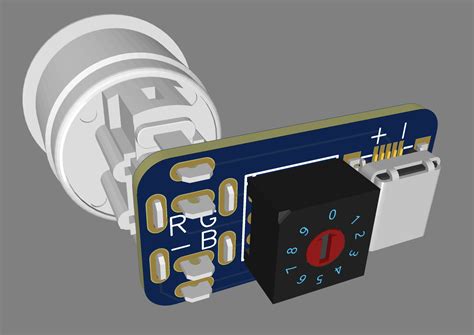Introduction to QFN and QFP Packages
QFN (Quad Flat No-lead) and QFP (Quad Flat Package) are two popular surface-mount package types used in electronic circuit design. Both package types offer a variety of benefits, including small size, high pin count, and excellent thermal and electrical performance. However, when it comes to choosing the right surface finish for these packages, designers often face a dilemma between HASL (Hot Air Solder Leveling) and ENIG (Electroless Nickel Immersion Gold).
What are QFN and QFP Packages?
QFN packages are leadless packages with a small footprint and a low profile. They have a flat, square or rectangular body with exposed copper pads on the bottom surface for soldering. QFN packages are known for their excellent thermal and electrical performance, as well as their ability to accommodate high pin counts in a small form factor.
QFP packages, on the other hand, have gull-wing leads that extend from the package body. They are also square or rectangular in shape and offer a high pin count. QFP packages are known for their robustness and reliability, making them a popular choice for a wide range of applications.
Advantages of QFN and QFP Packages
| Package Type | Advantages |
|---|---|
| QFN | – Small footprint and low profile – Excellent thermal and electrical performance – High pin count in a small form factor – Cost-effective |
| QFP | – Robust and reliable – High pin count – Suitable for a wide range of applications – Established and mature technology |
HASL and ENIG Surface Finishes
When it comes to choosing a surface finish for QFN and QFP packages, HASL and ENIG are two popular options. Each surface finish has its own advantages and disadvantages, which designers must consider when making their choice.
What is HASL?
HASL (Hot Air Solder Leveling) is a surface finish that involves dipping the PCB in molten solder and then using hot air to remove excess solder, leaving a smooth, flat surface. HASL is a cost-effective and widely used surface finish that offers good solderability and reliability.
Advantages of HASL
- Cost-effective
- Good solderability
- Widely available
- Suitable for most applications
Disadvantages of HASL
- Not suitable for fine-pitch components
- Can cause thermal shock to the PCB
- May result in uneven surface finish
What is ENIG?
ENIG (Electroless Nickel Immersion Gold) is a surface finish that involves depositing a layer of nickel on the copper pads, followed by a thin layer of gold. ENIG offers excellent solderability, flatness, and durability, making it a popular choice for high-reliability applications.
Advantages of ENIG
- Excellent solderability
- Flat and smooth surface finish
- Suitable for fine-pitch components
- Good shelf life and durability
Disadvantages of ENIG
- More expensive than HASL
- Requires strict process control
- Can be prone to black pad syndrome
Choosing Between HASL and ENIG for QFN and QFP Packages
When choosing between HASL and ENIG for QFN and QFP packages, designers must consider several factors, including cost, reliability, and the specific requirements of the application.
Factors to Consider
| Factor | HASL | ENIG |
|---|---|---|
| Cost | Lower cost | Higher cost |
| Solderability | Good solderability | Excellent solderability |
| Fine-pitch compatibility | Not suitable for fine-pitch | Suitable for fine-pitch |
| Reliability | Good reliability | Excellent reliability |
| Shelf life | Shorter shelf life | Longer shelf life |
| Process control | Less strict process control | Requires strict process control |
When to Choose HASL
HASL is a good choice for QFN and QFP packages in the following situations:
- Cost is a primary concern
- The application does not require fine-pitch components
- The PCB will not be exposed to thermal shock during the manufacturing process
- The shelf life of the PCB is not a critical factor
When to Choose ENIG
ENIG is a good choice for QFN and QFP packages in the following situations:
- The application requires fine-pitch components
- High reliability is a critical factor
- The PCB needs a flat and smooth surface finish
- The PCB will be stored for an extended period before assembly

Conclusion
Choosing the right surface finish for QFN and QFP packages is a critical decision that can impact the reliability, performance, and cost of the final product. HASL and ENIG are two popular surface finishes that offer different advantages and disadvantages. By considering factors such as cost, reliability, and the specific requirements of the application, designers can make an informed decision and choose the surface finish that best meets their needs.
Frequently Asked Questions (FAQ)
-
Q: What is the main difference between QFN and QFP packages?
A: The main difference between QFN and QFP packages is that QFN packages are leadless and have exposed copper pads on the bottom surface for soldering, while QFP packages have gull-wing leads that extend from the package body. -
Q: Which surface finish is more cost-effective, HASL or ENIG?
A: HASL is generally more cost-effective than ENIG, as the process is simpler and requires fewer materials. -
Q: Can HASL be used for fine-pitch QFN and QFP packages?
A: HASL is not suitable for fine-pitch QFN and QFP packages, as the uneven surface finish can cause issues with soldering and reliability. ENIG is a better choice for fine-pitch components. -
Q: What is black pad syndrome, and which surface finish is more prone to it?
A: Black pad syndrome is a defect that can occur with ENIG surface finish, where the nickel layer separates from the copper pad, resulting in a weak solder joint. ENIG is more prone to black pad syndrome than HASL. -
Q: Which surface finish offers better shelf life and durability, HASL or ENIG?
A: ENIG offers better shelf life and durability compared to HASL, as the gold layer provides protection against oxidation and corrosion.

No responses yet